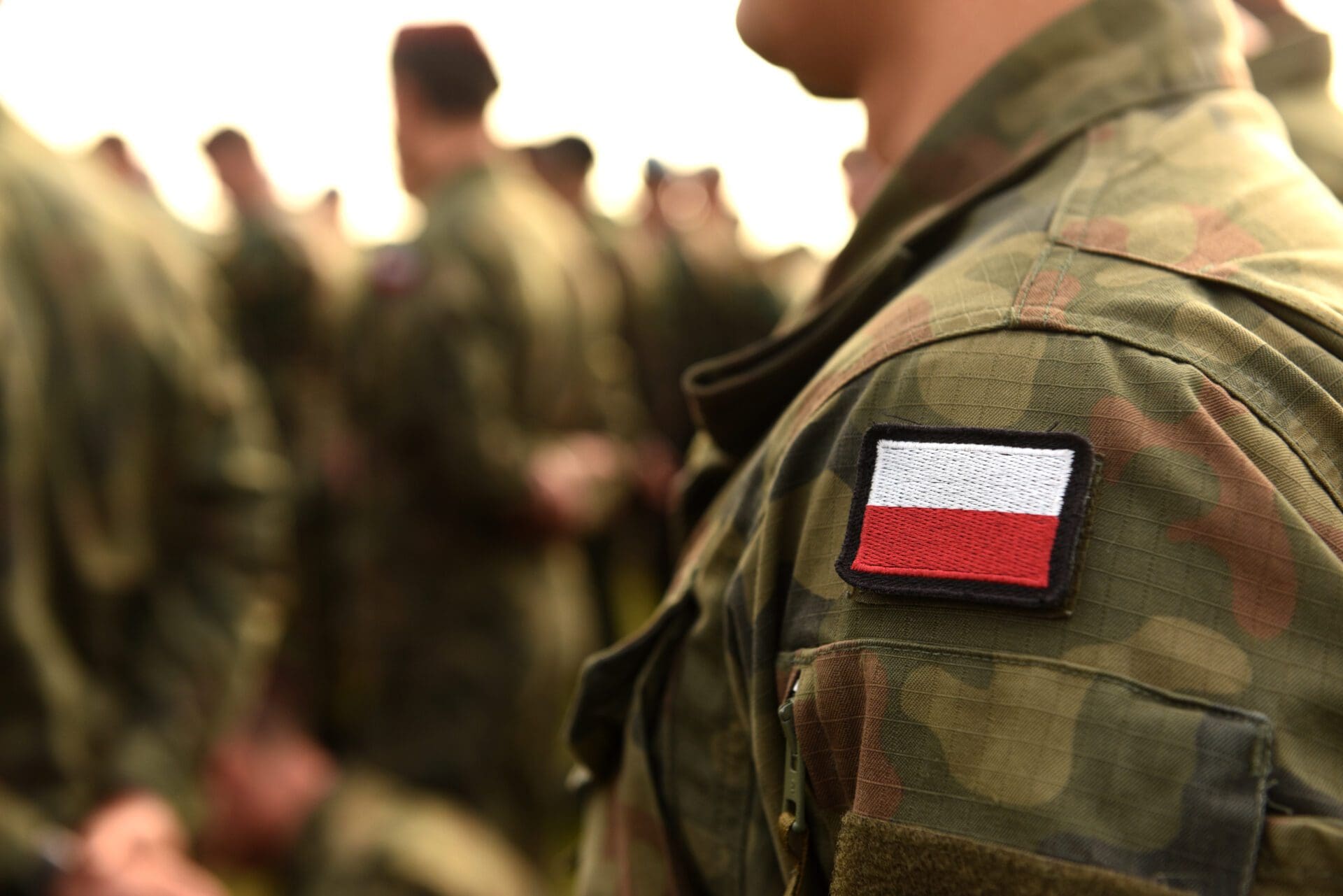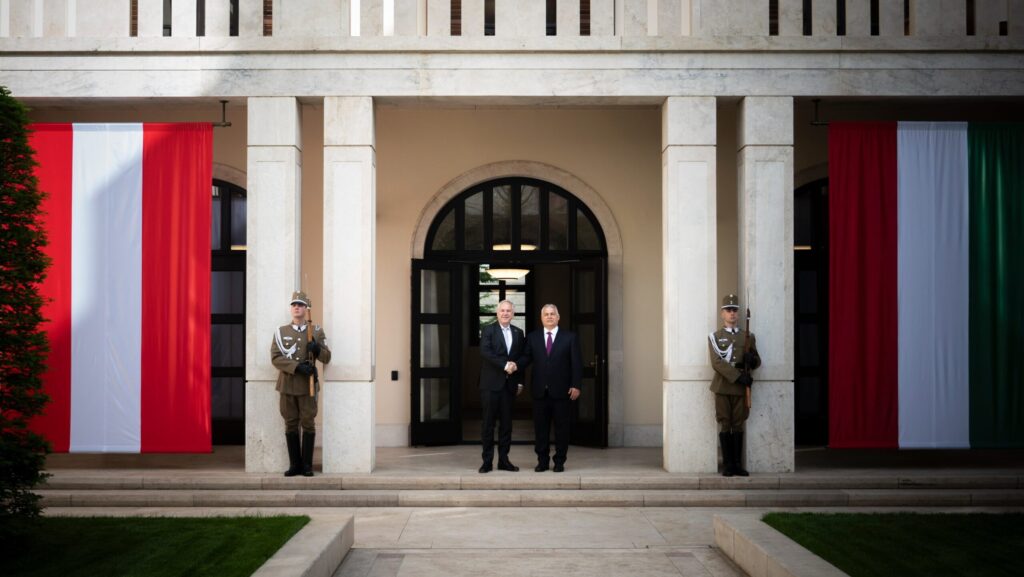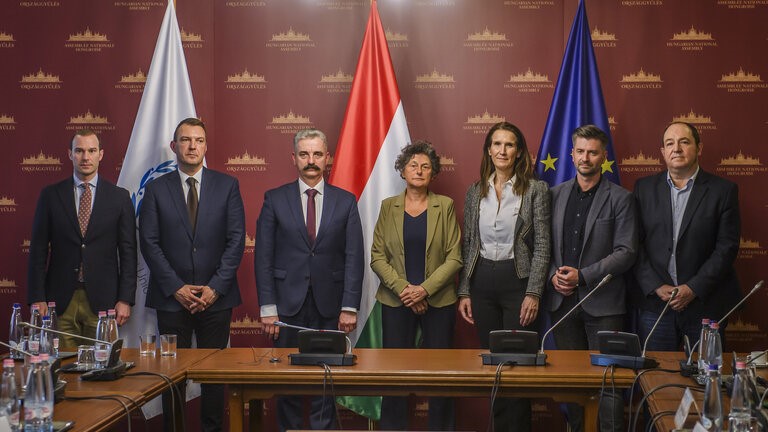Poland has arguably the strongest army in Europe, which will only get stronger in the coming years thanks to Warsaw’s ‘paranoia’ about Moscow, argue Matthew Karnitschnig and Wojciech Kość on POLITICO. Poland’s emergence as a military power in Europe could also increase its political influence on the continent and enhance Warsaw as a strategic ally in the eyes of Washington.
Polish Force Development
Poland’s suspicions of Russia have led Warsaw to reject the prevailing zeitgeist across Europe that conventional warfare is a thing of a bygone era and Moscow’s aggression in Ukraine has only strengthened Warsaw’s resolve to build a strong land army on the eastern flank of Europe.
‘The Polish army must be so powerful that it does not have to fight due to its strength alone,’ Prime Minister Mateusz Morawiecki said on the eve of Poland’s Independence Day.
Poland’s growing military capacity, the country’s geopolitical position and geographic location have also enhanced Warsaw’s role in NATO and thus its importance in the eyes of the United States in the shadow of the war in Ukraine. Washington, while turning its gaze from the old continent to the Pacific, has continuously argued that Europe needs to develop its defence capabilities and be ready to defend itself. In this sense, Poland’s drive to develop an effective land army is more than welcomed overseas and could even bring a shift in Washington’s European alliance system.
‘Poland has become our most important partner in continental Europe,’ a senior US Army official in Europe said, citing the key role Poland has played in supporting Ukraine and in strengthening NATO’s Baltic flank.
Germany, as the United States’ traditional European ally, remains a valuable partner for Washington as a logistical hub. And although Russian aggression has brought about the ‘Zeitenwende‘ or strategic turning point in Germany, the details of force development are still a matter of debate in Berlin. By contrast, Warsaw has been developing its army for years.
The authors note that Warsaw has decided to raise its defence spending from 2.4 per cent of GDP to 5 per cent and the country aims to spend 524 billion złoty on the military by 2035. Meanwhile, Germany, which spent about 1.5 per cent of GDP on defence last year, is debating whether it can reach NATO’s 2 per cent goal after it exhausts a €100 billion defence investment fund it approved earlier. Poland already has more tanks and howitzers than Germany, and while compared with Berlin’s current 170,000, Warsaw’s army is about 150,000 strong (with 30,000 belonging to a territorial defence force set up in 2017), its target is 300,000 by 2035. Furthermore, unlike Germany, where the lack of military culture can be an obstacle to force development, Poles have a much more positive attitude towards their military.
Turning Military Power into Political Influence
But Warsaw has not yet been able to translate its military power into growing political influence in Europe, Karnitschnig and Kość argue. The main reason for this is Poland’s multi-front dispute with the European Union. EU institutions have no confidence in the Law and Justice Party (PiS) government and have accused Warsaw of dismantling the rule of law and violating democratic values. And political infighting even within the PiS is further weakening Poland’s unity.
Poland’s emergence as a strategic ally in Washington’s eyes is also hampered by criticism of Polish domestic political and rule of law issues. It is worth recalling that Joe Biden referred to Poland (and Hungary as well) as totalitarian regimes in his presidential campaign.
Another thing that Washington may frown upon is that, although in the first round of military acquisitions Poland bought plenty of US technology for its military build-up, Warsaw has recently signed major contracts with South Korea for the purchase of military equipment. So far, Poland has ordered $10–12 billion worth of weaponry from Korea, that include 180 K2 Black Panther tanks, 200 K9 Thunder howitzers, 48 FA-50 light attack aircraft, and 218 K239 Chunmoo rocket launchers. Furthermore, the Koreans are also expected to provide a total of 1,000 K2 tanks and 600 K9 Howitzers by the mid-to-late 2020s. The competitive advantage of Korea is that their military equipment is generally cheaper than its American and European alternatives, and can be produced on a tight timetable, the POLITICO article highlights. The procurement of Korean technology also sends a political message from Warsaw to the West, the authors remind, quoting PiS chairman Jarosław Kaczyński, who warned in a town hall meeting with his constituents in November that Poland was ready to buy arms in other EU countries ‘but they need to stop their war against Poland’.
While Germany welcomes Poland’s military build-up, France, seeing East-Central Europe as a buffer between it and Russia, has reservations about Warsaw’s new Korean equipment procurement. Poland’s purchases in Korea also defy French President Emmanuel Macron’s vision of European strategic autonomy, according to which Europe should be able to defend itself with domestically produced, primarily French, weapons.
What about Hungary?
Hungarian Prime Minister Viktor Orbán’s long-standing argument for a joint European army, which he has repeatedly voiced since the outbreak of the war in Ukraine, has been well received by President Macron. Also, Hungary’s force development is in line with the French President’s vision of the need to boost European military technology procurement and build up the European and national military industries.
In 2016, the Hungarian government announced the Zrínyi 2026 Defence and Force Development Programme with the promise of realizing the long-awaited and well-needed modernization and reformation of the Hungarian Defence Forces (HDF) in the next ten years. The force development programme essentially aims to acquire NATO-compatible equipment, from personal equipment to combat gear, not just by importing new technologies from NATO allies, but also to build national manufacturing capacities. This will enable Hungary to produce complete weapon systems on its own. The creation of this type of manufacturing capacity is well underway in several Hungarian cities.
In Gyula, parts for military helicopters are being produced, while in Kaposvár armoured vehicles and military drones are being built. In Kiskunfélegyháza, small firearms are manufactured, under Czech licence; in Várpalota ammunition and mortars, while in Nyírtelek radars are being produced. In addition, infantry fighting vehicles are produced in Zalaegerszeg, and an IT base for high-end military systems is located in Budapest. Hirtenberger Defence Systems, acquired by the Hungarian government, will also relocate its headquarters to Hungary in 2024.
One of the most significant developments in the HDF’s military technology—with which HDF has regained a lost capability—is the Lynx KF41 infantry fighting vehicle. According to the Hungarian Ministry of Defence, the Hungarian Defence Forces will receive 46 of the Lynx combat vehicles produced by Rheinmetall AG by 2023, and a further 172 by 2029, which will be eventually be manufactured in Zalaegerszeg, Hungary.
To conclude, in the face of Russian aggression in Eastern Europe, Poland’s robust force development does not just valorize the country in the EU, but Warsaw could also step into the role of a key ally for Washington in the continent. However, Poland’s efforts to turn its growing military power into political influence may be hampered by rule of law criticisms and concerns over its arms purchases from non-NATO countries outside Europe. Meanwhile, the Polish and Hungarian force development, even if implemented in different ways, show that Central Eastern Europe is committed to increasing its contribution to Europe’s security in trying times.








